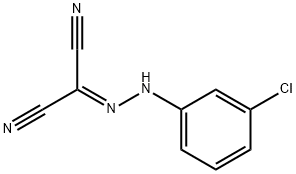BONGKREKIC ACID
- CAS NO.:11076-19-0
- Empirical Formula: C28H38O7
- Molecular Weight: 486.6
- MDL number: MFCD01729616
- EINECS: 231-791-2
- SAFETY DATA SHEET (SDS)
- Update Date: 2024-10-23 13:36:13

What is BONGKREKIC ACID?
Description
Bongkrekic acid (11076-19-0) is a p potent inhibitory ligand of the mitochondrial adenine nucleotide translocase (ANT).1?Inhibits mitochondrial permeability transition pore opening.2,3?Delivery of bongkrekic acid to the mitochondria prevents apoptosis in HeLa cells.4
Description
Bongkrekic (or bongkrek) acid, produced in fermented coconut by a pathovar of the bacterium?Burkholderia gladioli, is a more potent respiratory toxin than cyanide. Its first total synthesis was reported by?E. J. Corey and A. Tramontano?in 1984, and M. Shindo and co-workers described improved syntheses in 2004 and 2009. Most recently,?S. V. Ley?used three stereospecific palladium cross-coupling reactions to accomplish an even better synthesis.
The Uses of BONGKREKIC ACID
Bongkrekic acid solution has been used as an adenine nucleotide translocator (ANT) inhibitor to find out a different approach for the inhibition of oxidative phosphorylation in intact T98G cells. It has also been used as an inhibitor of the permeabilization transition pore complex (PTPC) pore and a tool to explore the role of PTPC in induction of apoptosis.
Definition
ChEBI: A tricarboxylic acid that is docosa-2,4,8,10,14,18,20-heptaenedioic acid substituted at positions 2 ,5 and 17 by methyl groups, at positions 6 by a methoxy group and at position 20 by a carboxymethyl group.
What are the applications of Application
Bongkrekic acid is an apoptosis inhibitor through prevention of PARP cleavage
Biochem/physiol Actions
An antiapoptotic agent, it protects against NMDA receptor induced neuronal apoptosis,- extends cell survival in cells undergoing apoptosis following infection with viral vectors and abrogates apoptosis induced by hydrogen peroxide in T-cells. It is an inhibitor of adenine nucleotide translocase, which is a component of the mitochondrial permeability transition (MPT) pore complex. Bongkrekic acid prevents mitochondrial depolarization, swelling, rupture of mitochondrial outer membrane, and release of apoptogenic proteins such as cytochrome c. This phenomenon was observed during staurosporine induced apoptosis in Jurkat cells, in HepG2 undergoing apoptosis following TNF-α and ethanol.
Enzyme inhibitor
This toxic tricarboxylic acid (FWfree-acid = 486.61 g/mol; CAS 11076-19-0), produced Pseudomonas cocovenenans, is a potent competitive inhibitor of the mitochondrial ATP-ADP translocator, effectively blocking nucleotide binding to the carrier. The name is derived from bongkrek, a moldy coconut product produced in Indonesia. The toxin accumulates when P. cocovenenans outgrows the mold. Klingenberg et al. investigated bongkrekate binding to mitochondrial membrane to examine the reorienting site mechanism. The inferred mode of inhibition requires bongkrekate to bind to the single carrier site only from the inner face of the mitochondrial membrane (i.e., the matrix side)). They confirmed the pH-dependent accumulation of [3H]bongkrekate inside the mitochondria which superimposes onto the binding at carrier sites. By breaking the membrane with Lubrol or sonication, binding to the carrier sites could be titrated, and a Kd value of approximately 5 x 10–8 M was determined. The presence of ADP or ATP increases the amount of binding but does not alter the Kd. [35S]Atractylate is displaced by [3H]bongkrekate at a 1:1 molar ratio; this displacement is dependent on ADP concentration with the Km = 0.5 x 10–6 M. See also Atractyloside The isomer known as isobongkrekic acid, which has a cis-double bond at the dicarboxylic acid end of the molecule, has similar biological activity. Target(s): Adenine nucleotide translocator, ADP/ATP carrier; ATPase; bromelain, stem; papain; ficain, or ficin.
References
1) Ziegler?et al. (1993),?The adenine nucleotide translocase modulates oligomycin-induced quenching of pyranine fluorescence in submitochondrial particles; J. Biol. Chem.,?268?25320 2) Marchetti?et al. (1996),?Mitochondrial permeability transition triggers lymphocyte apoptosis; J. Immunol.,?157?4830 3) Zamzami?et al. (1996),?Inhibitors of permeability transition interfere with the disruption of the mitochondrial transmembrane potential during apoptosis; FEBS Lett.,?384?53 4) Yamada?et al. (2013),?Mitochondrial delivery of bongkrekic acid using a MITO-Porter prevents the induction of apoptosis in human HeLa cells; J. Pharm. Sci.,?102?1008
Properties of BONGKREKIC ACID
| Melting point: | 50-60° |
| Boiling point: | 715.1±60.0 °C(Predicted) |
| alpha | D25 +162.5° |
| Density | 1.114±0.06 g/cm3(Predicted) |
| storage temp. | -20°C |
| solubility | Soluble in DMSO (up to 100 mg/ml) or in Water (up to 1 mg/ml). |
| form | Lyophilized solid |
| pka | 4.15±0.10(Predicted) |
| color | Colorless to light yellow |
| Stability: | Stable for 2 years from date of purchase as supplied. Solutions in DMSO or distilled water may be stored at -20° for up to 3 months. |
Safety information for BONGKREKIC ACID
Computed Descriptors for BONGKREKIC ACID
New Products
4-Fluorophenylacetic acid 4-Methylphenylacetic acid N-Boc-D-alaninol N-BOC-D/L-ALANINOL Tert-butyl bis(2-chloroethyl)carbamate 3-Morpholino-1-(4-nitrophenyl)-5,6-dihydropyridin- 2(1H)-one Furan-2,5-Dicarboxylic Acid Tropic acid S-2-CHLORO PROPIONIC ACID ETHYL ISOCYANOACETATE 2-Bromo-1,3-Bis(Dimethylamino)Trimethinium Hexafluorophosphate (6-METHYL-[1,3]DITHIOLO[4,5-b]QUINOXALIN-2-ONE INDAZOLE-3-CARBOXYLIC ACID 4-IODO BENZOIC ACID (2-Hydroxyphenyl)acetonitrile 4-Bromopyrazole 5,6-Dimethoxyindanone 2-(Cyanocyclohexyl)acetic acid 4-methoxy-3,5-dinitropyridine 2-aminopropyl benzoate hydrochloride 1-(4-(aminomethyl)benzyl)urea hydrochloride diethyl 2-(2-((tertbutoxycarbonyl)amino) ethyl)malonate tert-butyl 4- (ureidomethyl)benzylcarbamate Ethyl-2-chloro((4-methoxyphenyl)hydrazono)acetateRelated products of tetrahydrofuran








You may like
-
 Bongkrekic acid solution CAS 11076-19-0View Details
Bongkrekic acid solution CAS 11076-19-0View Details
11076-19-0 -
 2033-24-1 98%View Details
2033-24-1 98%View Details
2033-24-1 -
 1975-50-4 98%View Details
1975-50-4 98%View Details
1975-50-4 -
 2-HYDROXY BENZYL ALCOHOL 98%View Details
2-HYDROXY BENZYL ALCOHOL 98%View Details
90-01-7 -
 2-Chloro-1,3-Bis(Dimethylamino)Trimethinium Hexafluorophosphate 221615-75-4 98%View Details
2-Chloro-1,3-Bis(Dimethylamino)Trimethinium Hexafluorophosphate 221615-75-4 98%View Details
221615-75-4 -
 61397-56-6 CIS BROMO BENZOATE 98%View Details
61397-56-6 CIS BROMO BENZOATE 98%View Details
61397-56-6 -
 14714-50-2 (2-Hydroxyphenyl)acetonitrile 98+View Details
14714-50-2 (2-Hydroxyphenyl)acetonitrile 98+View Details
14714-50-2 -
 118753-70-1 98+View Details
118753-70-1 98+View Details
118753-70-1